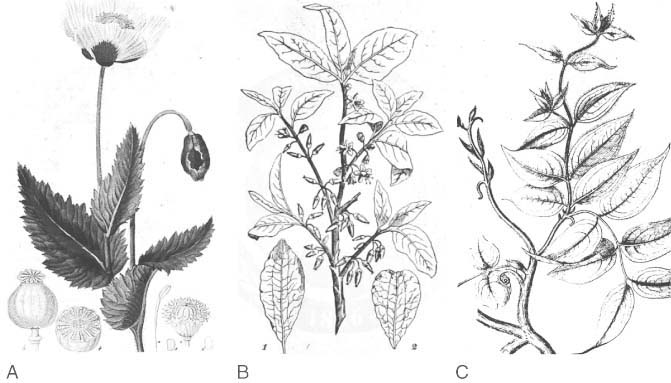 |
 |
Figure 1-9
Botanical origins of adjuvants used in anesthesiology.
A, Papaver somniferum,
from which opium is obtained. Opium is the ancient
Greek word for juice because the active alkaloids, which include morphine and codeine,
are obtained from the juice squeezed from the unripe seed pods. The first undisputed
reference to poppy juice is from the writings of Theophrastus (372–287 BC)
in the third century BC. B,
Erythroxylon coca, a shrub native to Peru and Bolivia
from which cocaine was isolated in 1856. Although the native people of Peru have
used the drug for centuries to increase endurance, they may have also used it as
a local anesthetic. C, Strychnos
toxifera, a source of curare, as drawn by Robert Schomburgk in 1841.[484]
Schomburgk traveled into Guiana following the maps drawn by Waterton and obtained
several species containing the active drug. Richard Gill's curare was obtained primarily
from Ecuador, and the arrow poisons there were made from Chondodendron
tomentosum. (Courtesy of the National Library of Medicine, Bethesda,
MD.)

 |
